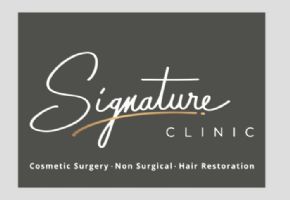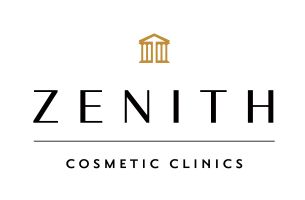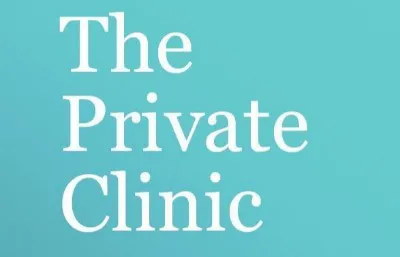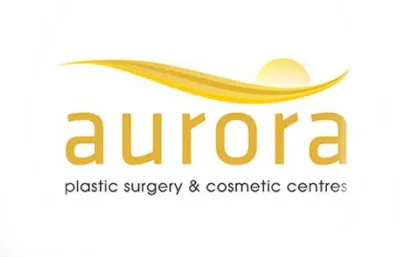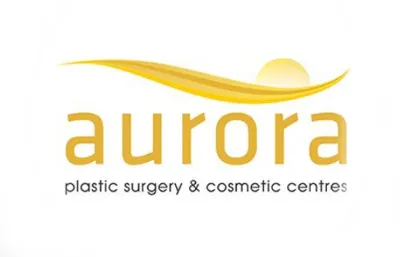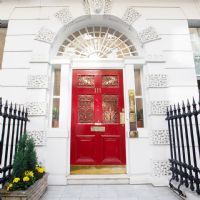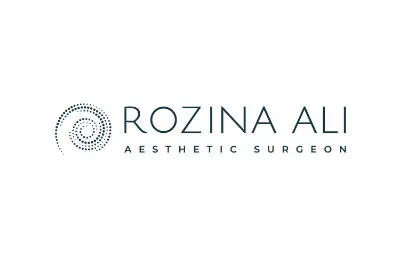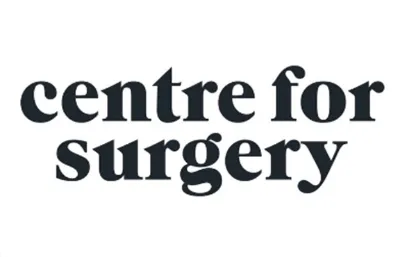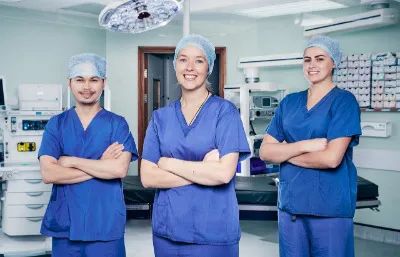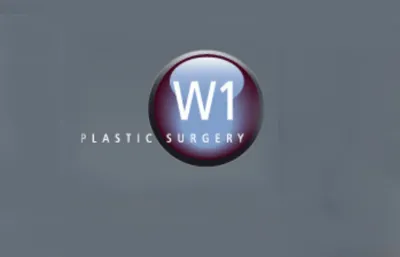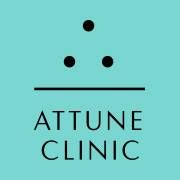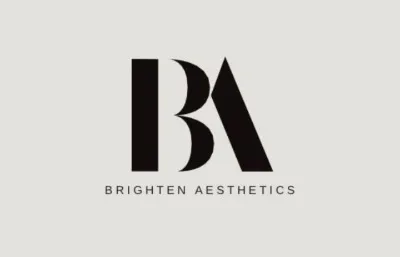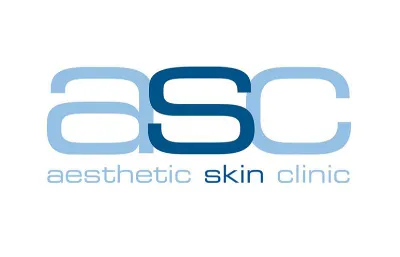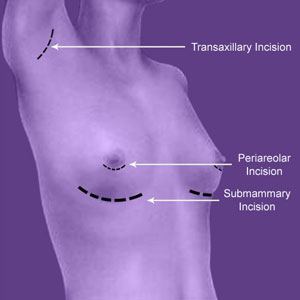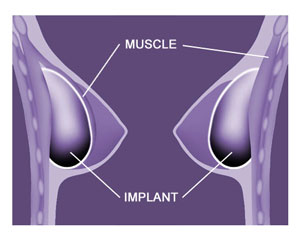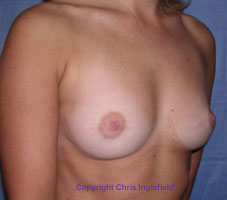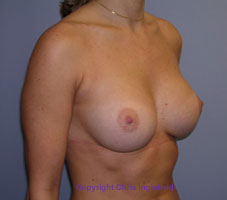You will feel sore and tired for a few days after the operation, just as you would after any surgery.
You may also experience a burning sensation in your nipples for some days after the operation, which will ease as the bruising starts to go down. Both the bruising and the slight discomfort afterwards are normal parts of the healing process.
The swelling in your breasts can take 3 - 5 weeks to go completely. Scars will be pink for several weeks, but they will begin to fade after a few months, although they will never disappear completely.
It is quite common for women to experience a change in sensation in their breasts after surgery with silicone or saline implants. Mostly, women say that their breasts are less sensitive than they were before the operation. This is usually only a temporary stage and soon your breasts will return to being as sensitive as they were previously. It is estimated that 1 in 7 women may experience loss of or a lessening in nipple sensation after breast enhancement, and in a minority of cases, this can be a permanent state.
Other side effects include developing an infection which may rarely result in the implants having to be removed.
A condition known as “Capsular Contracture” is one of the most common risks or complications after having breast implants.
If a “foreign body”, such as a silicone implant, is introduced into the chest, your body will automatically grow a wall of "scar tissue" around it as a protective process. Fibrous scar tissue does shrink, but by just how much varies from person to person and even from breast to breast.
Recent evidence in the U.K. suggests that in approximately 1 in 10 women who have had breast implants, the scar tissue can contract, pushing into the implant and causing it to deform. Often, the implant becomes hard and, in some cases, painful. The implant may have to be removed along with the capsule and replaced, if appropriate, with another implant.
Recent changes in implant design and technology with the more common use of textured implants (implants that have a roughened surface) claim that they help to reduce the likelihood of capsular contracture, with the rates of occurence having reduced from about a 10-15% chance to 5-6% according to some surgeons.
Can implants split and how long will they last?
Implants can split, or rupture by developing a hole in the silicone shell wall of the breast implant. Rupture was common with early, thin-walled implants, but happens much less often now.
There is little information about how often ruptures have occurred in U.K. patients who have had implants. However, as science develops stronger materials, the rupture rates appear to be going down. As to the life expectancy of an implant, since the treatment is still relatively new, we have little idea as to how long they can last.
Rupture does not necessarily create a medical problem: different fillers will react differently. If a split occurs in the majority of cases of silicone gel filled implants, the silicone gel will remain within the capsule that the body forms and can be removed if the ruptured implant is removed.
Occasionally, the silicone can spread outside the capsule into the breast and create a series of lumps known as siliconomas. These may give rise to symptoms such as tenderness in the breasts. In a small number of cases where gel has been found in the breast tissue, the muscles under the breast, the armpit or, rarely, around the nerves to the arm, some of the breast tissue may be lost when the implants are removed. These cases are very rare.
The Independent Review Group (I.R.G.) set up by The Department of Health to review the safety of silicone gel filled breast implants published its report in 1998 (information is archived on the MHRA website).
No relationship was shown between silicone gel implants and long-term “systemic illness” (or illness affecting the whole body).
The fact that implants are encased in an outer shell means that the chances of creasing or rippling in the “new” breast are unlikely. “Wrinkled breasts” are seen most frequently in women who had very little breast tissue before the implants.
There is no evidence that breast implants affect fertility, pregnancy, or the ability to breast feed a baby. If you have been breast feeding in the year before your surgery, you may produce milk for a few days after surgery. This can be treated with prescription medication to stop the milk flow.
There is no evidence that implants cause breast cancer, but you should let your doctor know that you have had implants before a mammogram (breast x-ray). You should then go to a radiology centre where staff are experienced in the special techniques needed to get reliable x-rays of implanted breasts. Ultrasound examinations may help to detect breast lumps in some women with implants.

